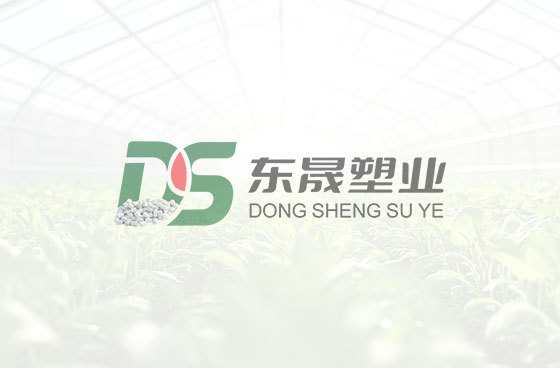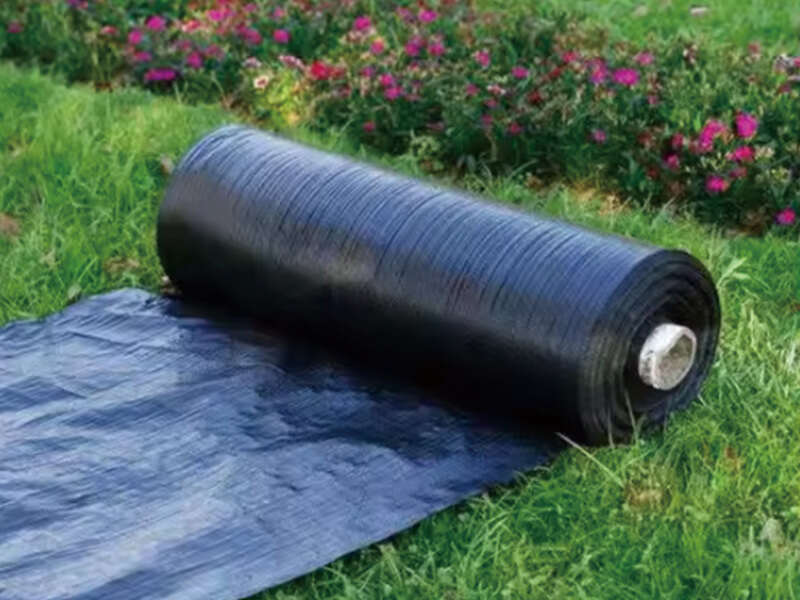The impact of black plastic mulch on soil
Publish Time:
2025-06-24
The impact of black plastic film mulching on soil microbial communities is complex, and its effects are closely related to factors such as film type (conventional vs. biodegradable film), coverage time, soil texture, crop type, and climatic conditions. A detailed analysis of the impact is as follows:
I. Impact on Microbial Quantity
Overall Quantity Changes
1. Short-term Coverage (<3 months):
Black plastic film, through its insulation and water retention properties, may create a more stable microenvironment for microorganisms, promoting the reproduction of some mesophilic microorganisms (such as bacteria and actinomycetes), leading to a short-term increase in their numbers. For example, studies have shown that in the initial stage of black film coverage (within 1 month), the number of soil bacteria increased by 10%~30% compared to bare land.
2. Long-term Coverage (>6 months):
Traditional polyethylene film may hinder gas exchange between the soil and the atmosphere, leading to an anaerobic environment in the soil under the film, inhibiting the growth of aerobic microorganisms (such as some fungi and actinomycetes), and even causing excessive reproduction of facultative anaerobic microorganisms, disrupting the microbial balance.
3. Degradable Black Film:
The organic carbon, nitrogen, and other substances released during its degradation can serve as microbial carbon sources, potentially promoting long-term increases in the total number of microorganisms, especially those that decompose cellulose and lignin (such as Trichoderma and Aspergillus in fungi).
Differences in Response Among Different Microbial Groups
1. Bacteria:
Most studies show that black film coverage can increase the number of bacteria, especially beneficial bacteria such as Pseudomonas and Bacillus, which may be related to stable soil moisture under the film and increased root exudates.
2. Fungi:
Short-term coverage has little impact on the number of fungi, but long-term coverage may lead to an increase in saprophytic fungi (such as Penicillium and Aspergillus) due to decreased soil aeration, while the number of beneficial symbiotic fungi such as arbuscular mycorrhizal fungi (AMF) may decrease (AMF depends on the aerobic environment of the roots).
3. Actinomycetes:
Actinomycetes are sensitive to oxygen; long-term coverage with traditional film may lead to a decrease in their numbers, while degradable film, by promoting the decomposition of organic residues, may maintain or increase the abundance of actinomycetes.
4. Nitrogen-fixing bacteria and phosphorus-solubilizing bacteria:
Under black film coverage, the soil temperature and humidity are more suitable, which may enhance the activity of nitrogen-fixing bacteria (such as Rhizobium) and phosphorus-solubilizing bacteria (such as Bacillus), improving the effectiveness of soil nitrogen and phosphorus.
II. Impact on Microbial Community Structure
Changes in Dominant Microbial Groups
1. Traditional black film coverage may lead to anaerobic or facultative anaerobic bacterial groups (such as Bacteroidetes and Firmicutes) becoming dominant groups, while the proportion of aerobic groups (such as Proteobacteria) decreases.
2. Degradable black film, due to the introduction of exogenous organic matter, may promote the proliferation of saprophytic groups (such as Ascomycota fungi) and functional groups (such as cellulose-decomposing bacteria and ammonifying bacteria), while maintaining a certain proportion of aerobic bacteria.
Changes in Functional Diversity
1. Microorganisms related to carbon cycling:
After covering with black film, the decomposition rate of soil organic carbon may accelerate (especially with degradable film), which is related to the increased abundance of cellulose-decomposing bacteria (such as Cellvibrio) and lignin-decomposing bacteria (such as white rot fungi).
2. Microorganisms related to nitrogen cycling:
The activity of nitrogen-fixing bacteria and ammonifying bacteria may increase, but long-term anaerobic conditions may inhibit nitrifying bacteria (aerobic), leading to the accumulation of ammonium nitrogen and a decrease in nitrate nitrogen in the soil.
3. Microorganisms related to disease resistance:
Some studies have shown that black film coverage can increase the number of antagonistic bacteria (such as Bacillus subtilis) in the soil, inhibiting the growth of pathogenic bacteria (such as Fusarium), and having a positive effect, especially in inhibiting soilborne diseases (such as tomato wilt).
III. Impact Mechanisms
Changes in Microenvironment
1. Temperature and humidity: Black film reduces the daily temperature difference of the soil and maintains a moist environment, suitable for the growth of mesophilic and high-humidity microorganisms, but long-term high temperature and humidity may lead to excessive reproduction of some thermophilic bacteria.
2. Aeration: Traditional film hinders oxygen penetration, causing the oxygen content in the soil layer 5~10 cm below the film to decrease by 10%~20%, forcing microorganisms to shift to anaerobic metabolic pathways.
3. Root exudates: Film coverage promotes crop root growth, increasing root exudates (such as sugars and amino acids), providing nutrients for rhizosphere microorganisms and changing the rhizosphere microbial community structure (e.g., the number of rhizosphere bacteria is 1~2 orders of magnitude higher than that of non-rhizosphere).
Film Residue and Degradation Products
1. Traditional polyethylene film residue fragments may adsorb soil nutrients and microorganisms, forming a "plastic-microbe" complex, affecting microbial distribution; its chemical additives (such as plasticizers) may have toxic effects on microorganisms.
2. Degradable films (such as polylactic acid PLA and starch-based films) release small organic molecules (such as fatty acids and sugars) during degradation, which can be directly utilized by microorganisms, promoting the growth of functional microbial groups.
IV. Research Cases and Data References
Case 1: In tomato cultivation, after 60 days of black film coverage, the soil bacteria/fungi ratio (B/F) increased from 1.2 in bare land to 1.8, indicating that bacteria became the dominant microbial group, which may be related to increased root exudates and a micro-oxygen environment under the film.
Case 2: In vegetable fields with long-term (2 years) coverage of traditional black film, the number of soil actinomycetes decreased by 25% compared to bare land, while the number of actinomycetes in the degradable black film treatment group increased by 12%, the difference being attributed to the film's aeration and carbon source supply capacity.
Case 3: In strawberry cultivation, black film mulching increased the abundance of antagonistic bacteria (such as Streptomyces) in the rhizosphere soil by 30%, while reducing the abundance of pathogenic bacteria such as Fusarium by 40%, significantly reducing the incidence of root rot.
V. Summary and Suggestions
Positive Effects:
Short-term mulching can optimize the microbial microenvironment, promote the proliferation of beneficial bacteria (such as nitrogen-fixing bacteria and antagonistic bacteria), and improve soil nutrient cycling efficiency.
Degradable black film, through carbon source supplementation, maintains microbial diversity in the long term, reducing the negative impact of film pollution on the microbial community.
Negative Effects:
Long-term coverage with traditional plastic film may lead to soil microbial imbalance (such as a decrease in aerobic bacteria and the proliferation of pathogenic bacteria). This requires measures such as crop rotation and timely film recovery.
Application Suggestions:
Prioritize degradable black film, especially in areas with long-term continuous cropping, to reduce residual pollution and maintain microbial functional diversity.
Control coverage time: Summer crops should not be covered for more than 4 months, and winter crops should not be covered for more than 6 months, to avoid the soil being in a low-oxygen state for a long time.
Combine with microbial agents: Applying Bacillus subtilis and mycorrhizal fungi before covering the film can enhance the competitiveness of beneficial microbial communities and alleviate the potential inhibitory effect of film mulching on microorganisms.
The impact of black film mulching on soil microbial communities is not unidirectional. By scientifically selecting the type and management methods of the film, the positive effects on soil ecology can be maximized, while reducing negative effects.
BLOGS

Unveiling the Power of Black&Silver Color Plastic Mulch Films in Agriculture
Discover how Black&Silver Color Plastic Mulch Films can revolutionize your farming strategy. Learn about their benefits and applications.

Unlocking the Benefits of Black Embossed Mulch Film in Modern Agriculture
Explore the latest trends and advantages of using black embossed mulch film in agriculture.

Unlocking the Secrets of Black&Silver Color Plastic Mulch Films
Discover the benefits and applications of Black&Silver Color Plastic Mulch Films in gardening and agriculture.

Unlocking the Secrets of Black Embossed Mulch Film in Modern Agriculture
Discover how Black Embossed Mulch Film is revolutionizing farming practices and enhancing crop yields.

Mastering Strawberry Planting Skills for a Bountiful Harvest
Unlock the secrets of effective strawberry planting skills and enjoy a thriving garden full of juicy strawberries!

The Wonders of Black Embossed Mulch Film: A Gardener's Best Friend
Discover how black embossed mulch film can revolutionize your gardening experience. Learn tips and benefits!










